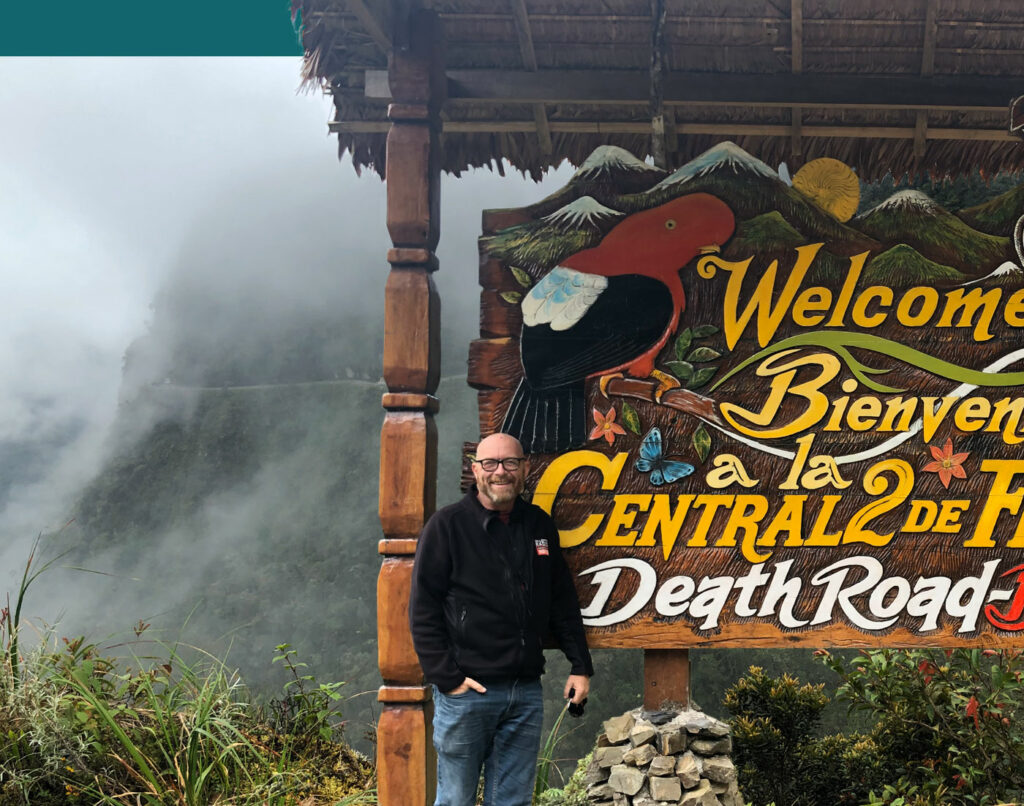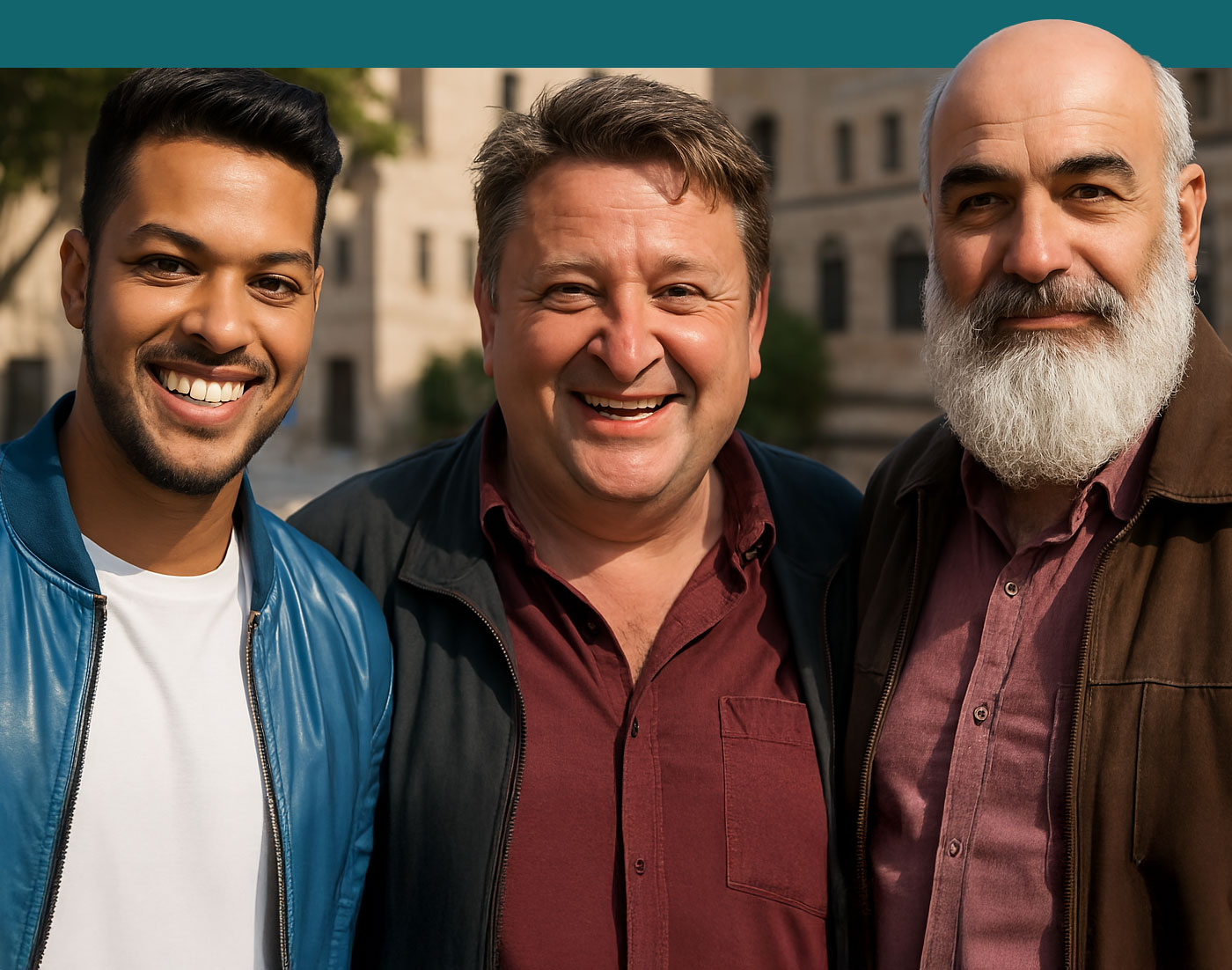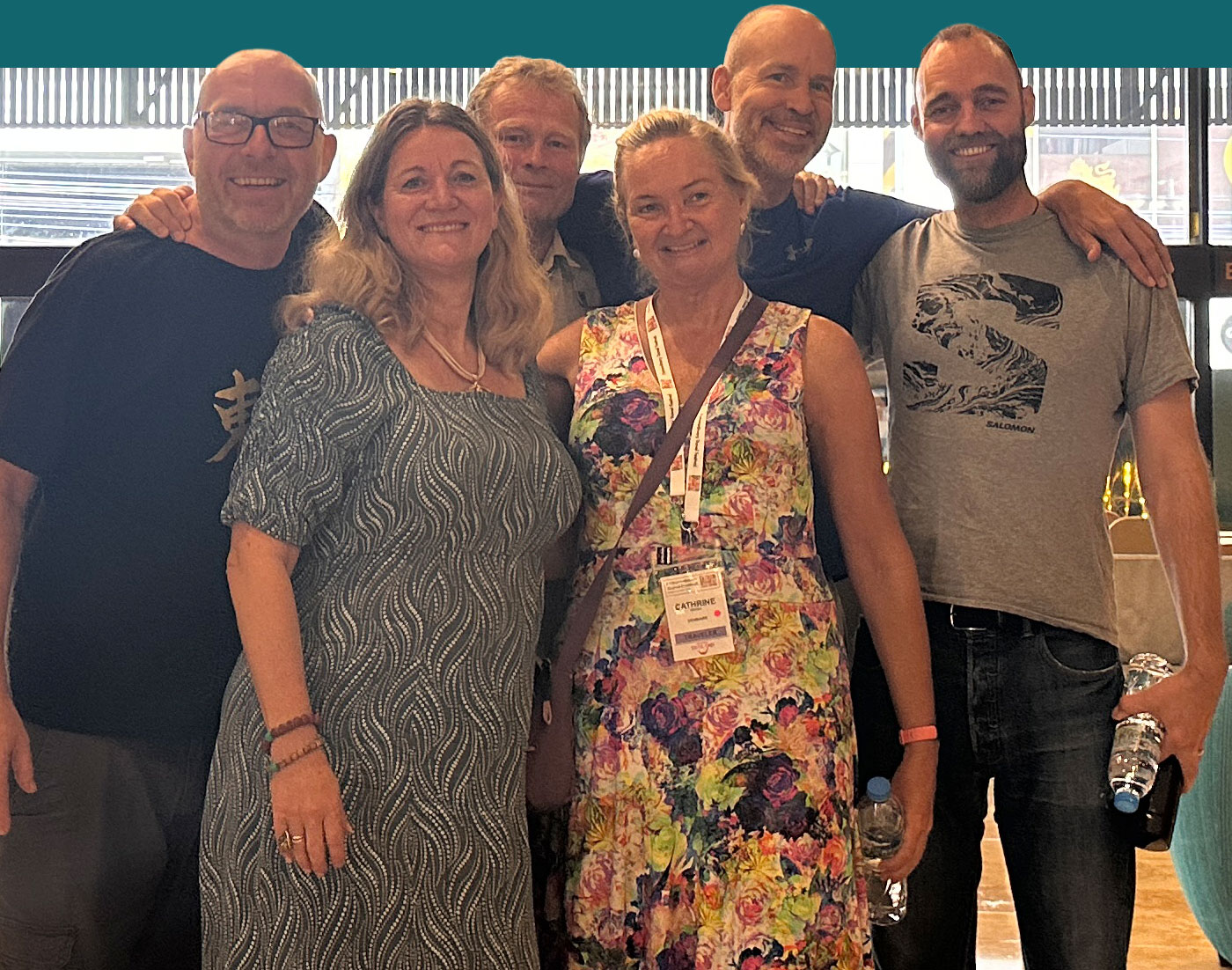¡HOLA BOLIVIA!
In this episode, we’re going to La Paz in Bolivia. First, we’re going over the city in what is called. ‘The most spectacular public transport system on the planet’. Then we’re going to what is called ‘The most dangerous road on the planet’. And then we finish the best way possible by flying on a 1.5 km zipline more than 400 meters above a valley.
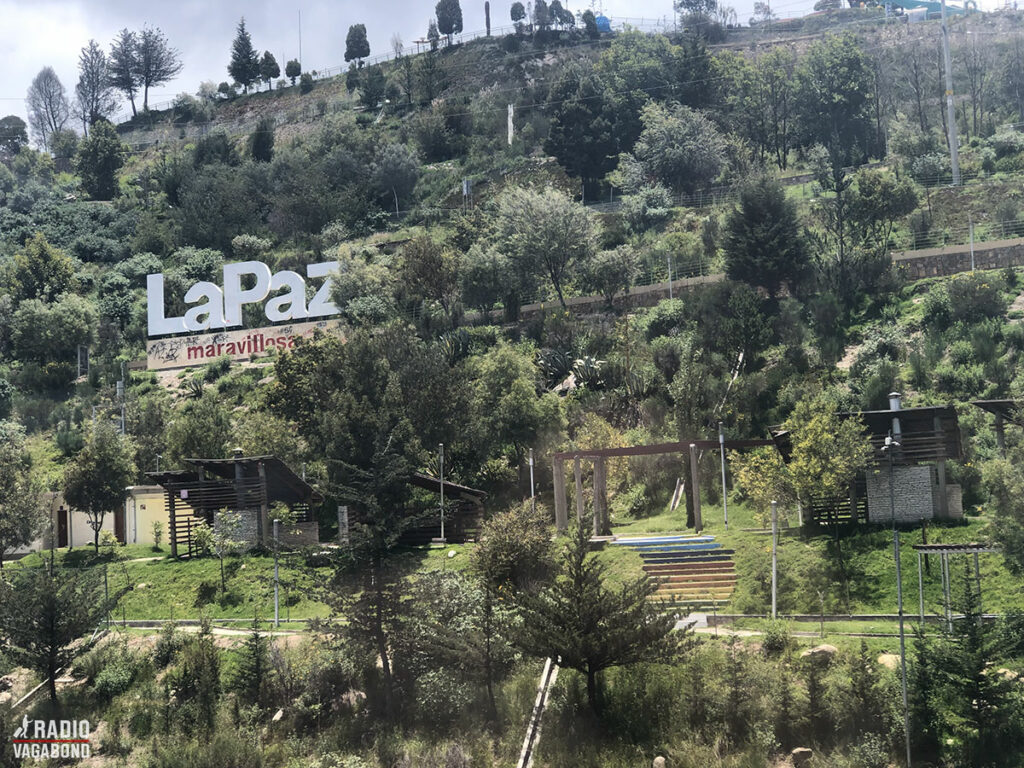
EXPLORING BOLIVIA
I arrived at La Paz, the capital of Bolivia, at 10 pm but unfortunately, everything was closed. Luckily, I found a street vendor where I bought water and snacks. I was exhausted, and I was looking forward to sleeping. I arrived in one of the tiniest and crummiest apartments that I have been to on my journey. I would be spending the next three nights there.
This is the eighth-highest city in the world, 3,650 m (11,975 ft) above sea level.
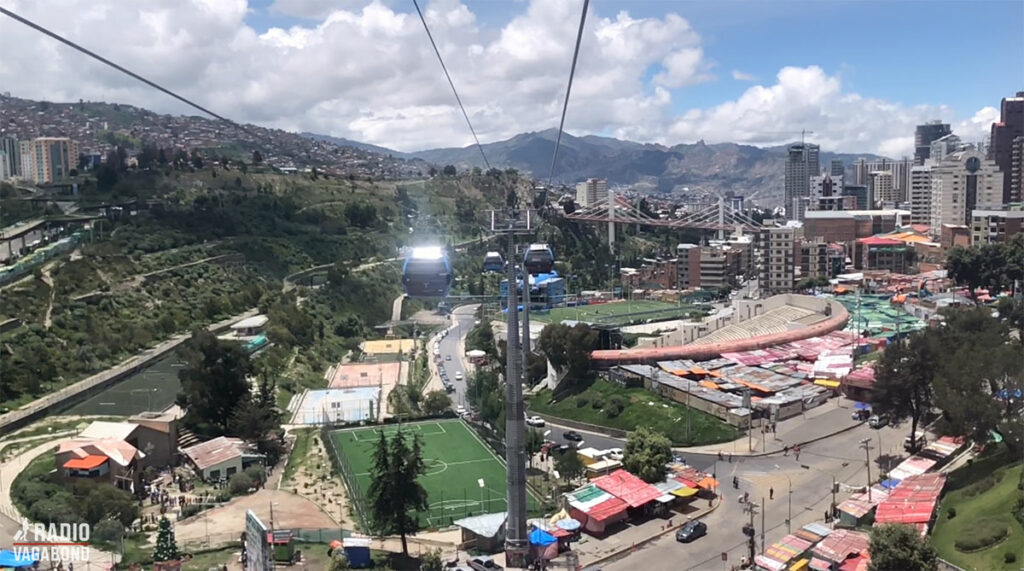
One thing I noticed was that the air was thin, due to the high elevation, and it was easy for one to get out of breath very quickly. I also felt that it was cold, so I had to bring out my jacket that I hadn’t worn in a long time.
If you are reading this – and are a bit of a geek, you might say,
“Hang on, Mr. Bo… La Paz is not the capital of Bolivia. That’s Sucre”.
Well, yes and no. Let’s just get some facts straight.
FACTS ABOUT LA PAZ
La Paz is the De Facto Capital of Bolivia
It’s the seat of government and the legislative and executive capital. The constitutional capital of Bolivia, Sucre, remains the judicial power.
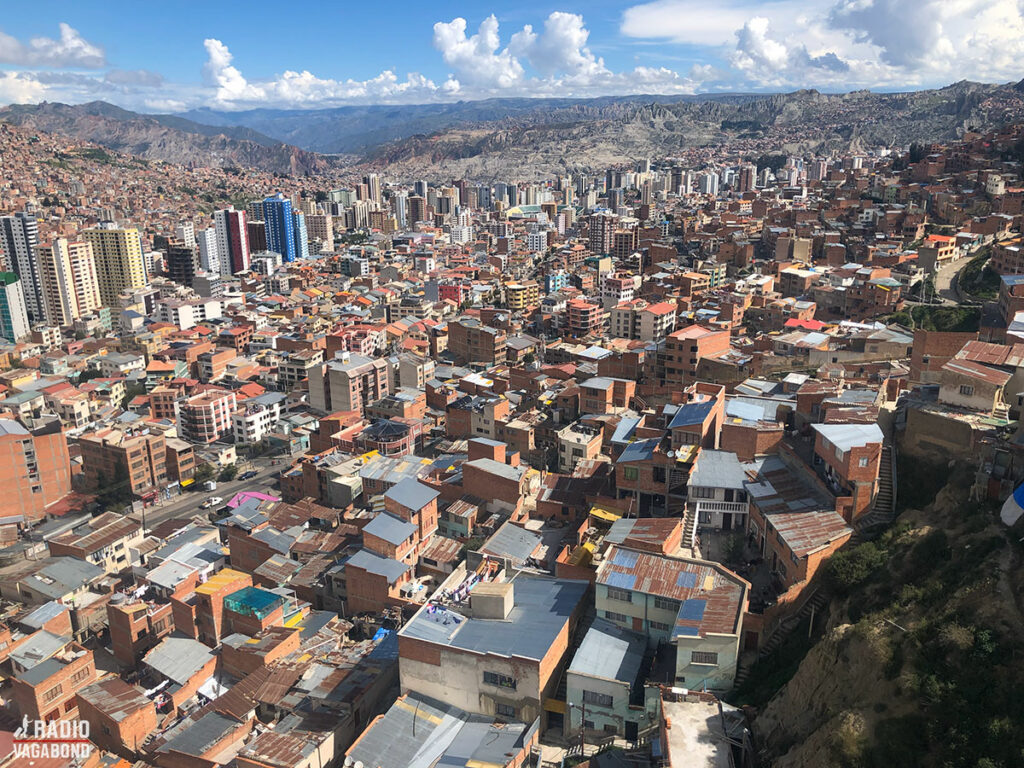
A Remarkable Location
La Paz is in west-central Bolivia 68 km (42 mi) southeast of Lake Titicaca.
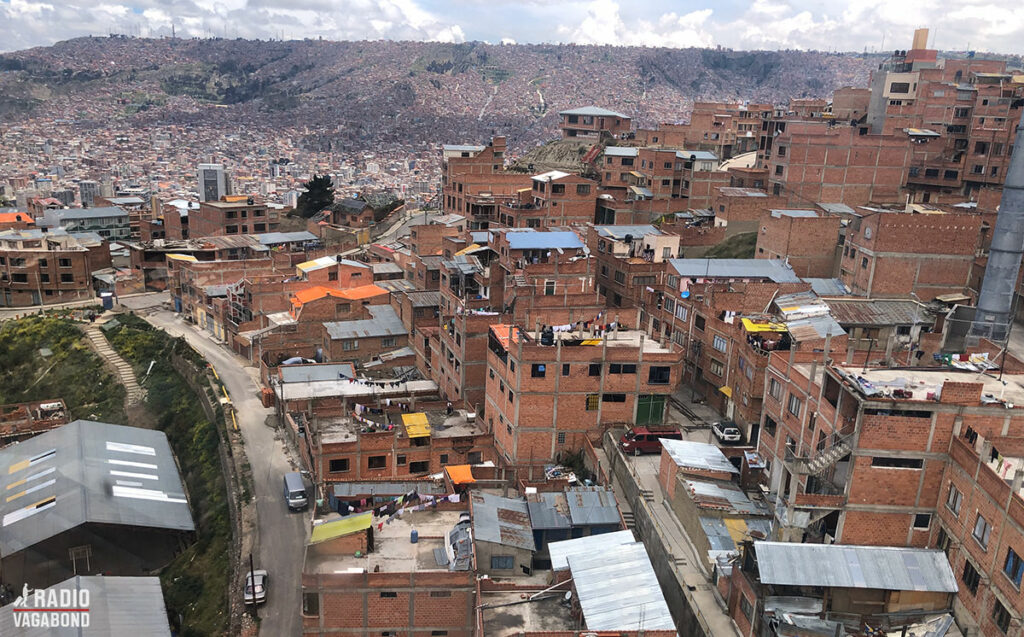
The 3rd Most Populated City in Bolivia
With an estimated 816,044 residents, La Paz is the third-most populous city in Bolivia. Its metropolitan area with a population of 2.3 million makes it the most populous urban area in Bolivia.
The Illimani Mountains are an Incredible Backdrop of The City
Overlooking the city is the towering, triple-peaked Illimani Mountain. Its peaks are always snow-covered and can be seen from many parts of the city.
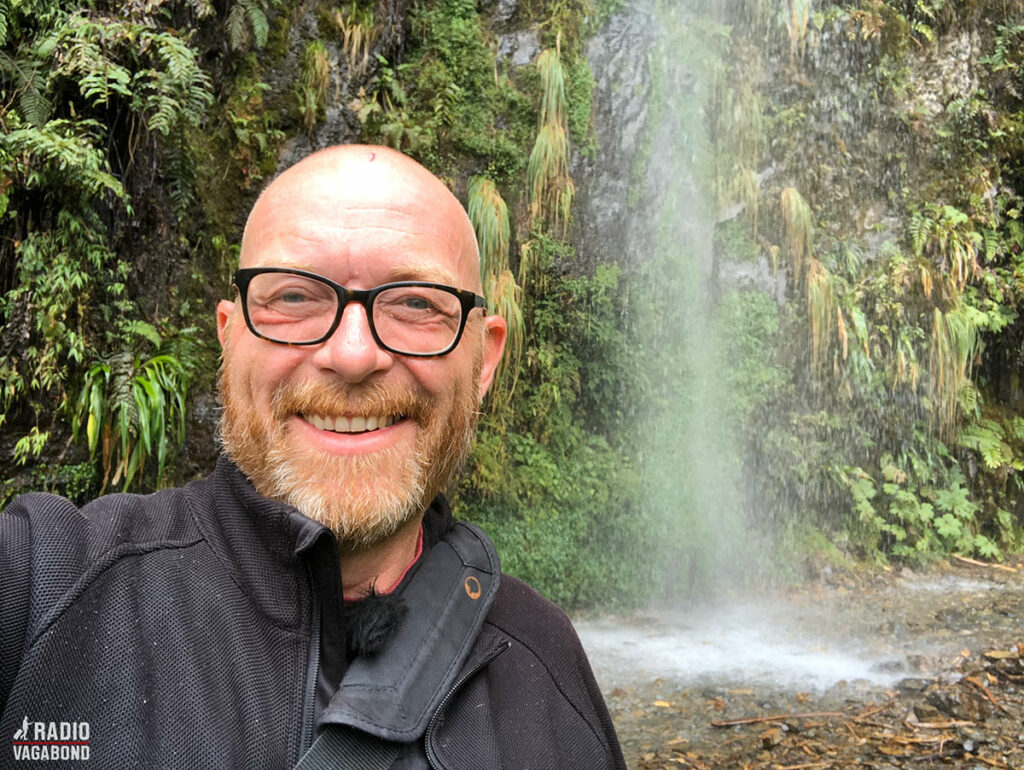
Highest Capital City Globally
At an elevation of roughly 3,650 m (11,975 ft) above sea level, La Paz is the highest capital city in the world.
It is one of the Seven Wonder Cities
In May 2015, it was officially recognized as one of the New 7 Wonders Cities. This was a project aimed at highlighting the greatest cities.
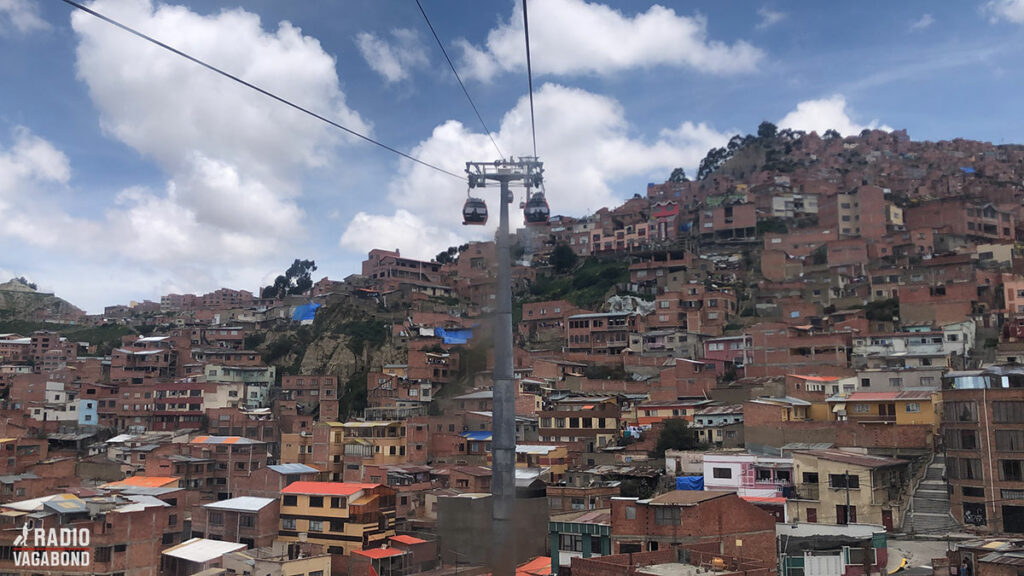
MY CABLE CAR
La Paz is also home to the largest urban cable car network in the world – and it’s really something special. It’s called “Mi Teleférico” in Spanish, which translates to “My Cable Car”.
It’s an aerial cable car urban transit system and the first line was opened in 2014. Now the system consists of 26 stations along ten lines. One more line and extensions are in construction.
Based on its master plan, the completed system, which is being built by the Austrian company, Doppelmayr, is intended to reach a length of 33.8 km (21.0 mi) with 11 lines and 30 stations.
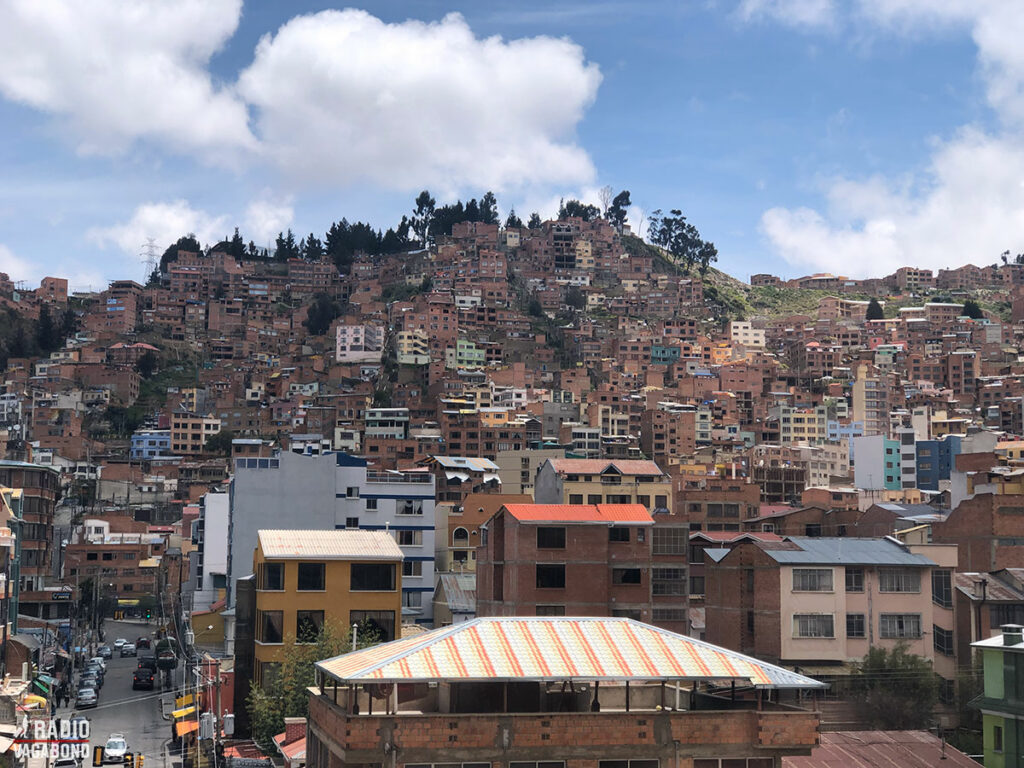
While other having urban transit cable cars (like the Metrocable system in Medellín, Colombia) works as a little extra add-on to existing transport systems, La Paz is the first to use cable cars as the backbone of the urban transit network.
Before My Cable Car, it was both expensive and time-consuming to move around the city in the chaotic traffic with both environmental and noise pollution.
Each line has a maximum capacity of 6,000 passengers per hour, each car seats ten passengers, cars depart every 12 seconds, and the network is open 17 hours a day. It moves around a quarter of a million passengers per day.
And then it’s crazy cheap! A ticket is only 3 Bolivian Boliviano or less than 50 cents, and the locals can get it even cheaper using “smart tickets”.
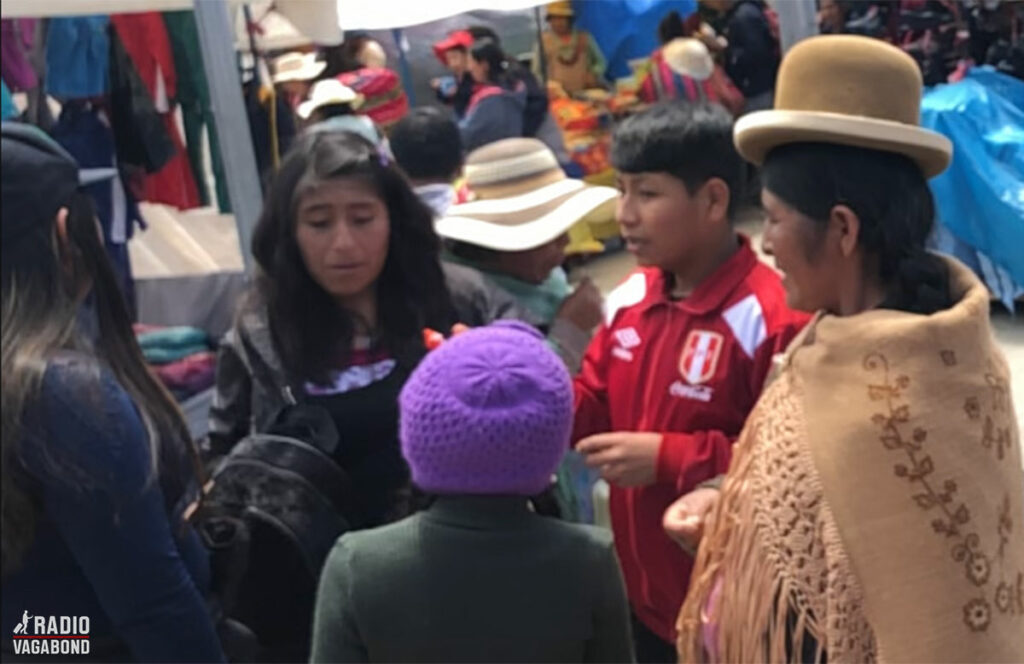
The system connects La Paz to the neighboring city, El Alto, where I’m heading right now with my friend Alex.
The two cities are separated by a steep slope about 400 m tall (1,300 ft), which were previously only connected by winding, congested roads. Now we’re floating high above this, and we get to see La Paz from a different angle.
My Cable Car has become a must-visit for all travelers, and not only is it good for the locals and the environment, but it’s also now a major tourist attraction. While in El Alto, we found a market where we found some fried chicken.
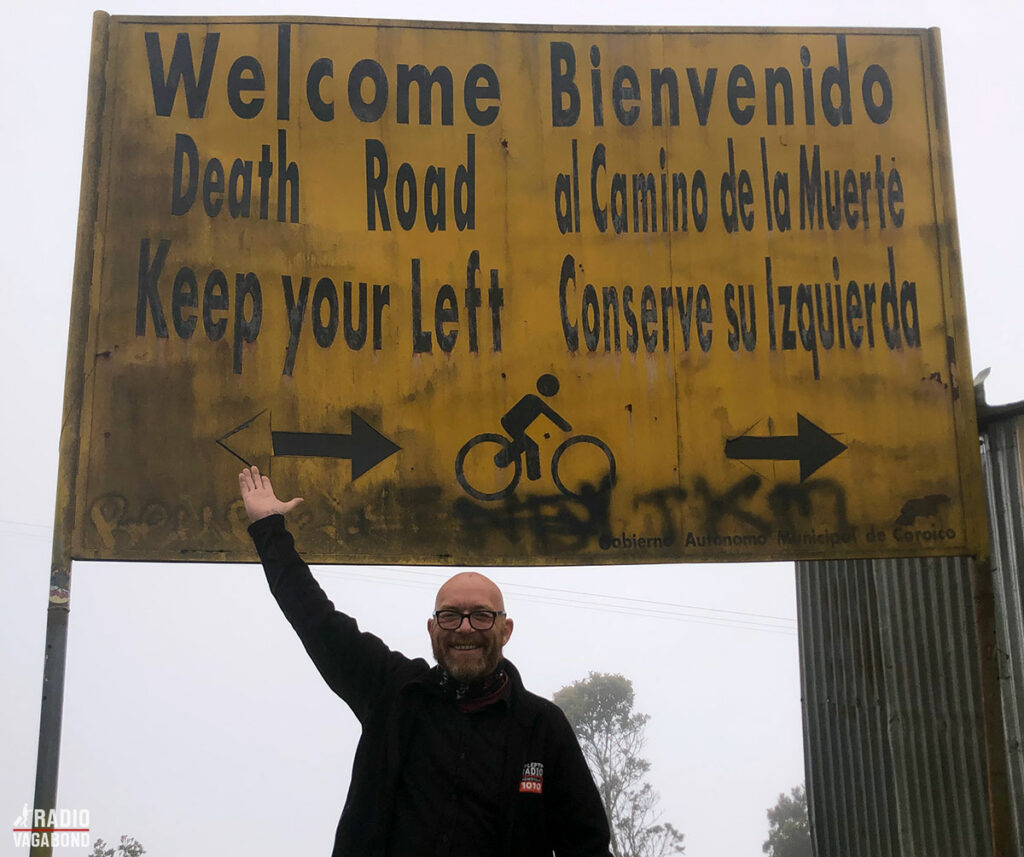
DEATH ROAD
At 07.30 the next morning, I was heading to Death Road with my friend Alex. I could see many people on mountain bikes while waiting on other travelers at our rendezvous spot.
Yungas Road, also known as Death Road (Ruta de la Muerte in Spanish). It was named in 1995 as it was the world’s most dangerous road. There are reports that nearly 300 people were killed on this road every year until 1994. So, Death Road got its name because of its high death rate. Some people say that the name comes from Paraguayan Prisoners of War that died during the construction of the road back in the 1930s.
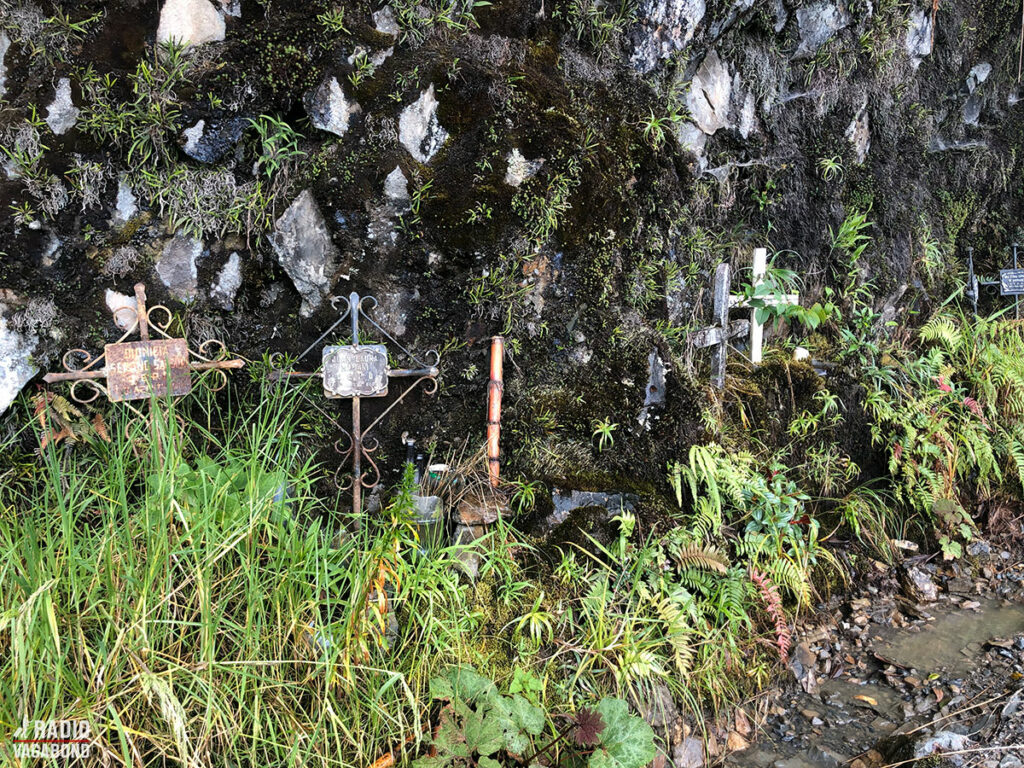
Now it draws about 25,000 tourists per year and is a major La Paz tourist attraction. We were out of breath when climbing up because the air was very thin. However, the views were worth it.
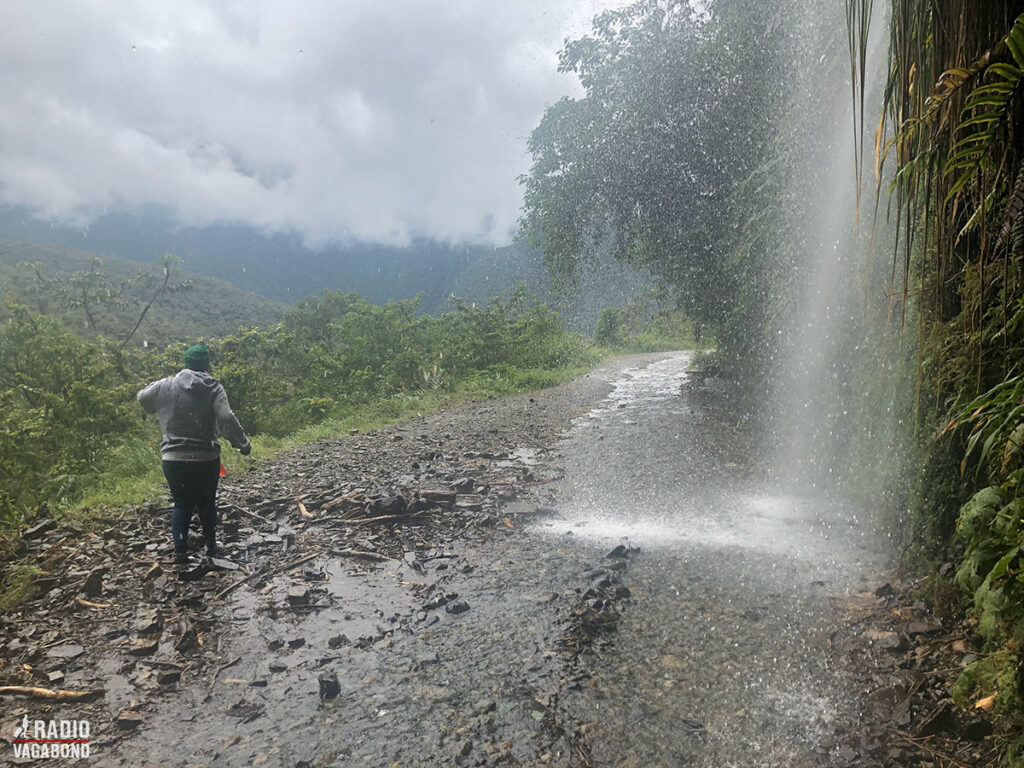
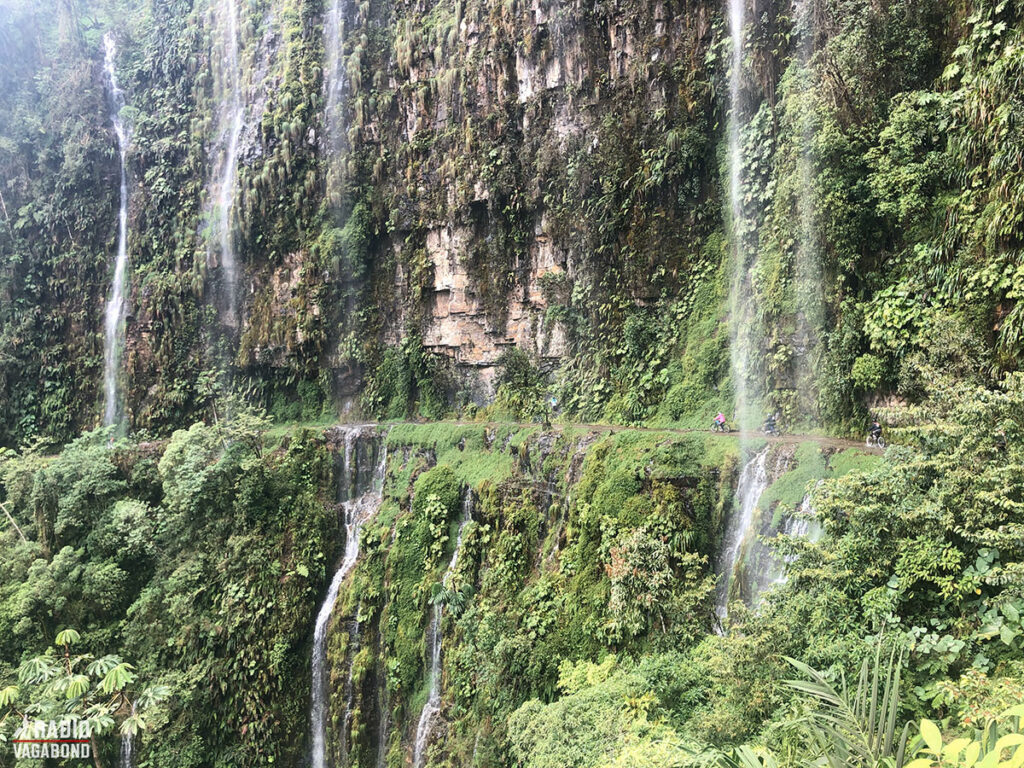
We then went downhill to 1,100 meters. We went through many types of climates as this was a rainforest. The first half of the tour was on a paved road, and the other half was on gravel.
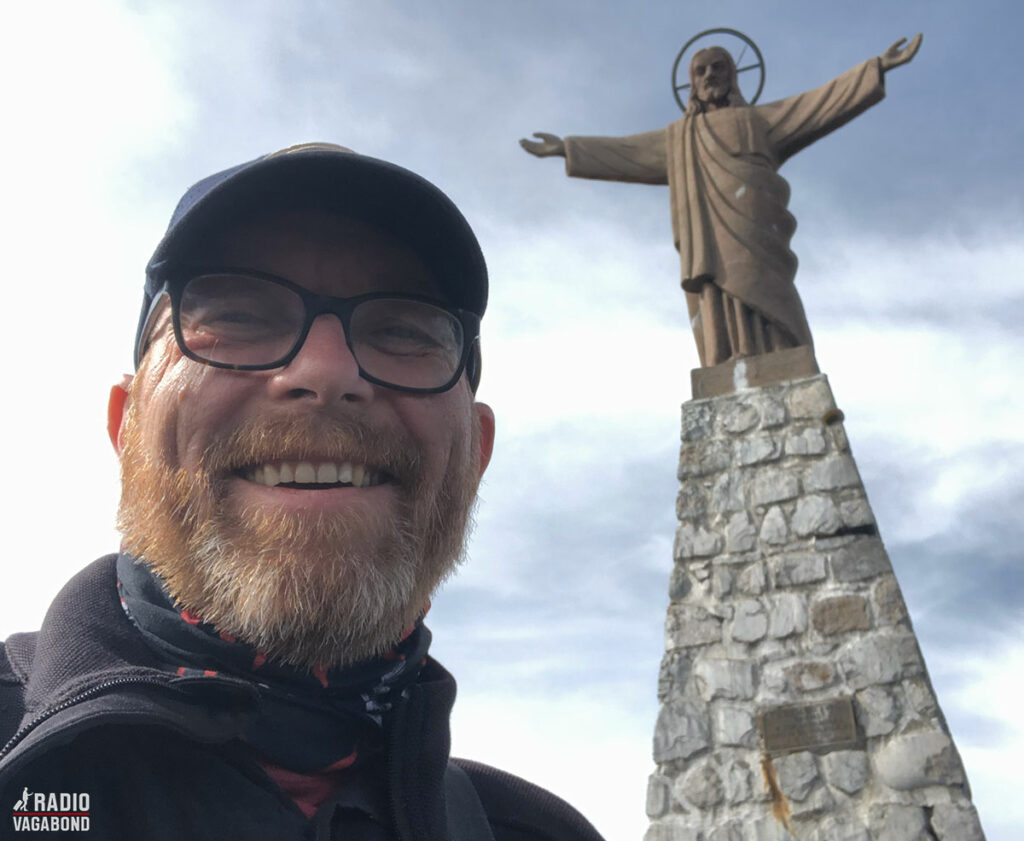

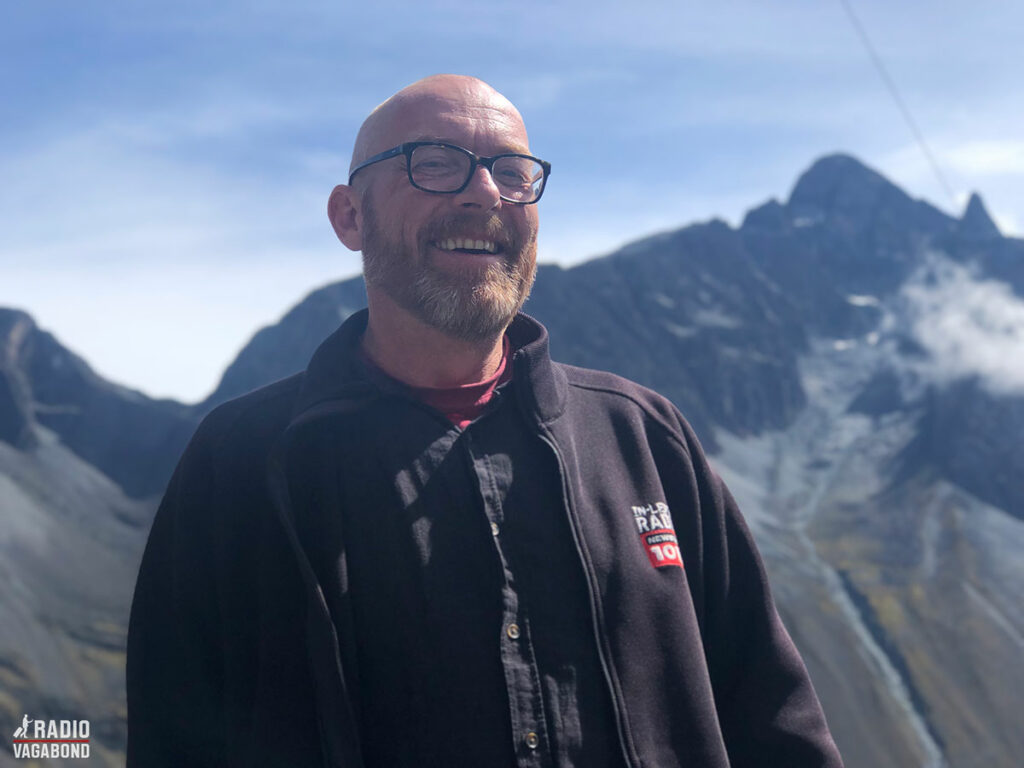

Unlike the rest of the country, traffic here is on the left side of the road, to allow the driver to have a clear view of the distance of their outer wheel from the edge of the road.

We were there in an old smaller Nissan bus, and I felt relatively safe. Looking down on one instance, we could not see anything as we were in a cloud. It was interesting to move through the different microclimates on the road.
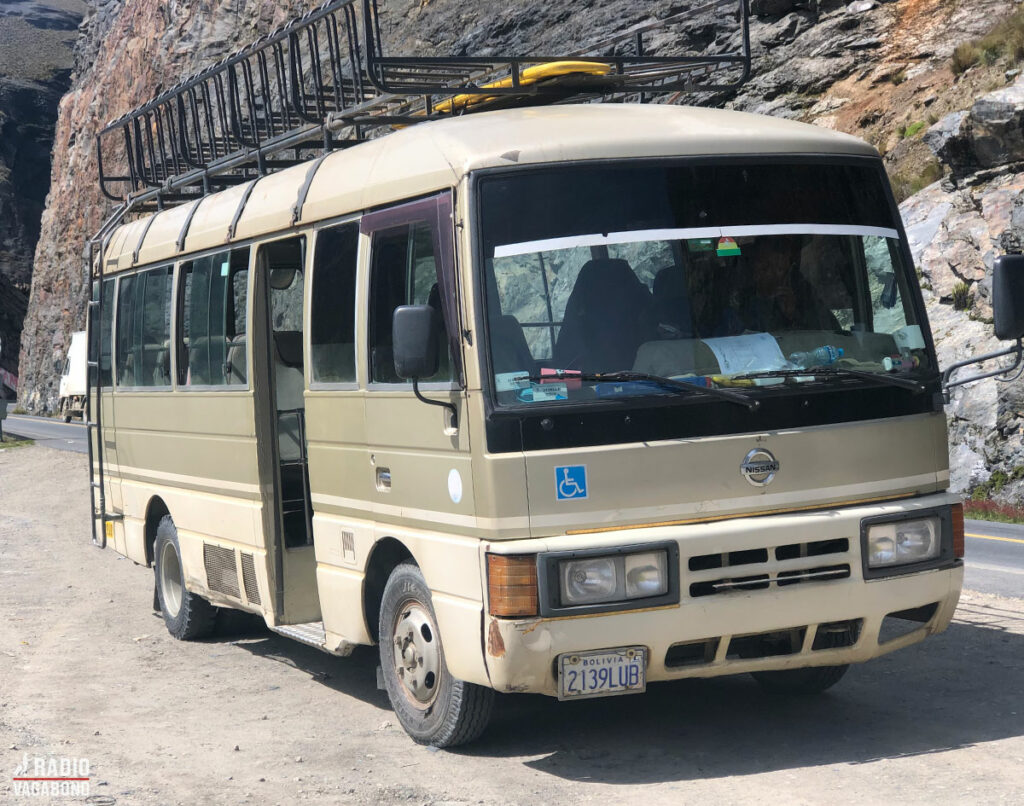
It’s 64 kilometers long and with the steepness, amazing scenery, and the infamous reputation it makes mountain biking down it a must-do day trip for adventure-seeking visitors to La Paz.

The guide, Noel said in his safety briefing:
“We will be descending on bikes for 63km – 32km of asphalt and 31 Km of gravel road. Back then 200 to 300 people died here per year. Drivers prefer to take the new road”.
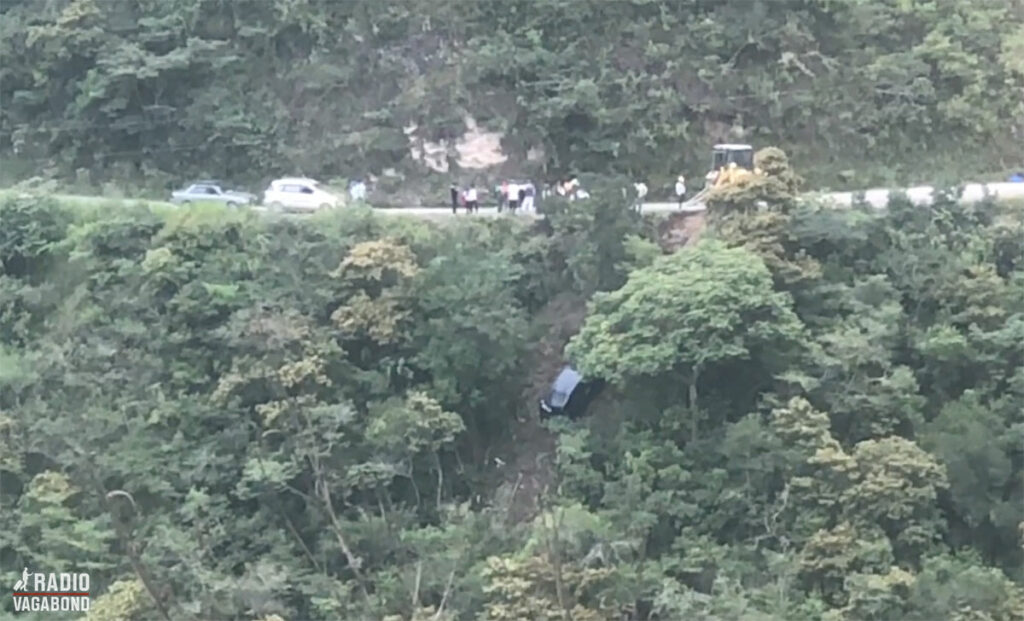
I have a friend who did it not that long before my visit, and he had an accident here.
He went over the edge and if he hadn’t grabbed onto a branch of a tree, it could have ended much worse. He was a bit of a daredevil that day and had driven ahead of the group. So, he had to hold on to the branch for a few minutes until the rest of the group caught up and managed to get a ladder down to him. He broke his collarbone and was hospitalized. But lived.
With that in mind, I chickened out on the mountain bike, and decided to do the trip on the bus.
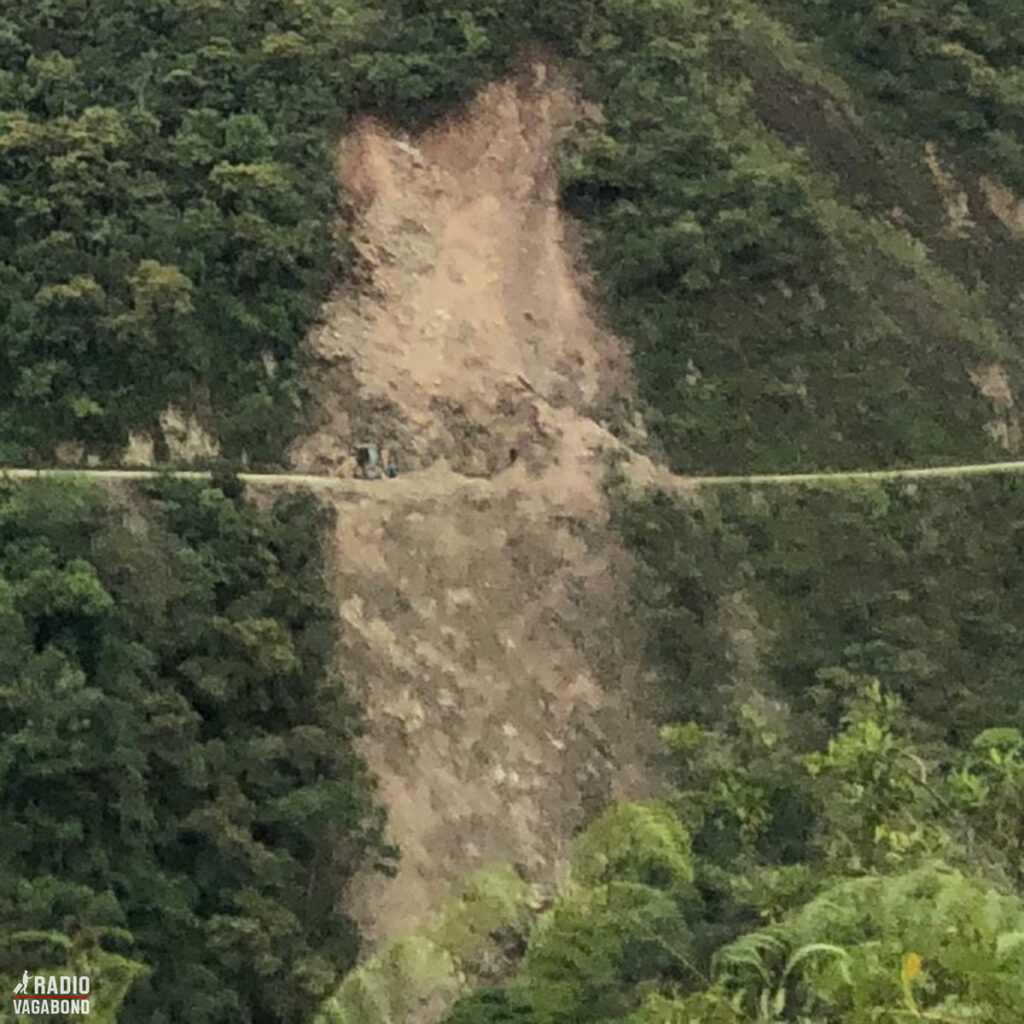
The other excuse I gave myself was that I didn’t know if I would be in good enough shape, plus the thing with the thin air. But come on. It’s a 64 km ride (40 miles) but it’s almost all downhill with only a few small parts uphill and a couple of flat ground. So, it’s really not that tough.
Looking back, I regret that I opted for the bus. I should have done the bike, and besides, I don’t know which option was more dangerous. Being on a bike with good breaks or being on an old bus that I had no control over.
The thought of riding a bicycle with a vertical drop beside you seem more dangerous than it really is. If you take it nice and slow, if you don’t push yourself (drive like a maniac), and if the equipment is good, all will be well.
We went on the trip with a company called Gravity Bolivia and they seem very professional. They have good mountain bikes with very good breaks. Also, their guide, Noel gave the riders thorough safety briefings.

ZZIP THE FLYING FOX
At the end of Death Road, we had another adrenalin rush waiting for us. It was Bolivia’s best zipline experience that consisted of three sections that lasted for a combined 1,550 meters (5,100 feet).
Her er en video fra grundlæggeren af Gravity Bolivia, Alister Matthew om turen på Dødens vej.
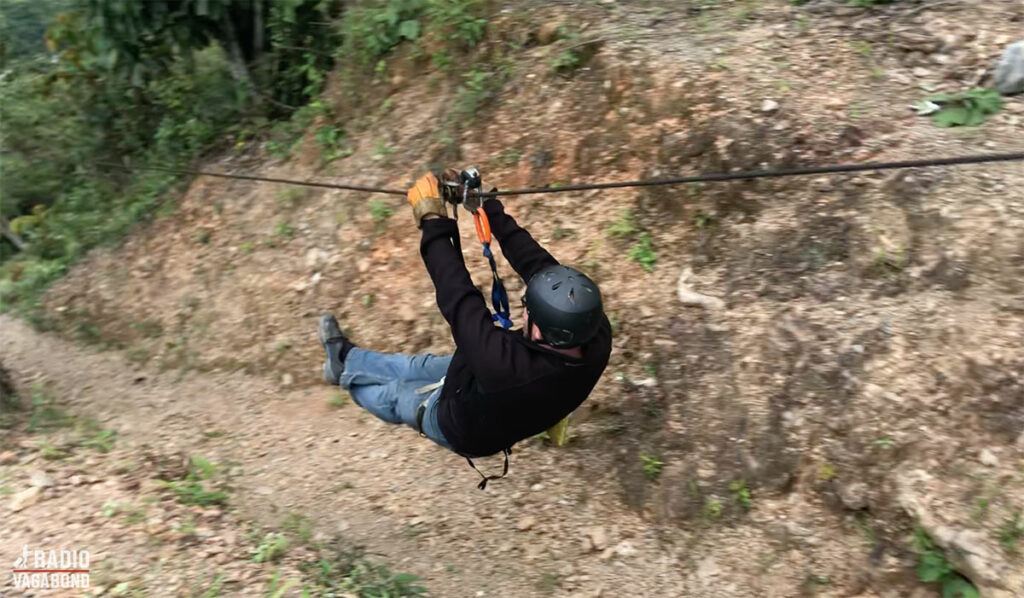
ZZIP THE FLYING FOX
At the end of Death Road, we had another adrenalin rush waiting for us. It was Bolivia’s best zipline experience that consisted of three sections that lasted for a combined 1,550 meters (5,100 feet).

As we were flying more than 400 meters above the stunning Yungas valley, we reached speeds of up to 85 km/h (52 miles per hour). One time with the legs first and twice in what they called a ‘Superman position’ which was face down and headfirst.
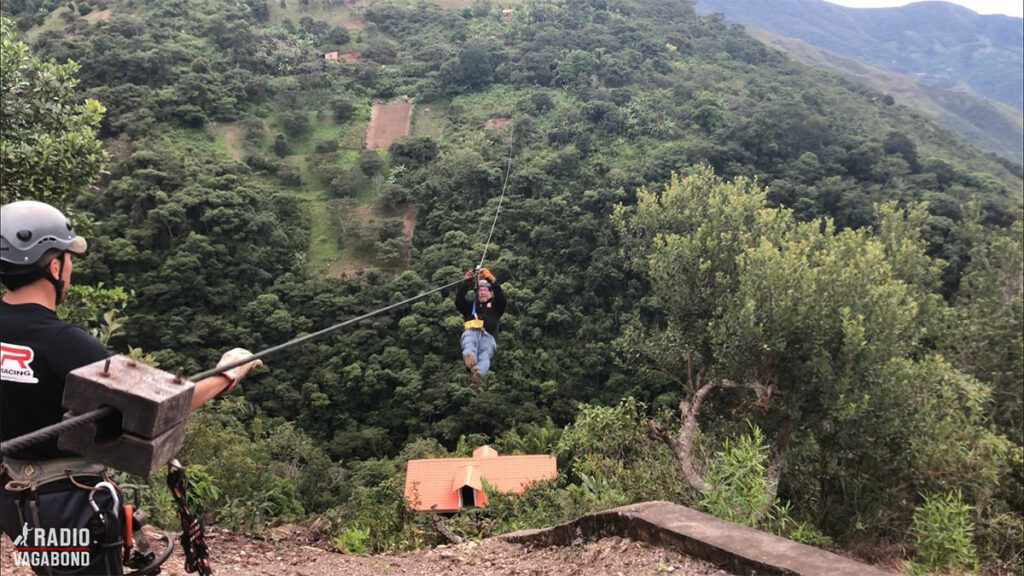
This part is run by ‘Zzip The Flying Fox’, and here is their Facebook page.

Bolivia was an amazing experience so far. There will be more from this South American country in a future episode.
My name is Palle Bo, and I gotta keep moving. See you.

LETTERS FROM EL SALVADOR
One of my recent episodes has become the most downloaded episode ever. It was the first episode of this season and was from El Salvador. After that, I got three emails from listeners in that small Central American country that you shouldn’t skip.
First one is from Juan Cortez:
Hi, there, I am a newcomer and certainly like your podcast. I envy your globetrotting and your stories. Thank you for putting in a good word for my country, El Salvador. Good and safe travels.
I’ll keep listening. Juan
Thank you, Juan. Glad you liked the episode and to have you on board as a new Radio Vagabond listener. You have a lot of catching up to do, so start listening.
Another short one from Maria Rodriguez:
I’m glad that you visited El Salvador. My country is so beautiful. I hope you can go again and visit Surf City at the beach.
Maria
Oh, I did. In fact, I was in El Tunco right at the time when the World Championship of Surfing took place. I have more to share in an upcoming episode.
And the third message from a listener in El Salvador:
Hola, my name is Tom Cornelius.
My wife and I have lived in El Salvador since May 2017. We came as missionaries and decided to stay.
Your story is good and touches many of the El Salvador’s high points. But even after 5 years, we have not explored the many natural beauties so near to us.
I hope that you were able to visit Lago de Coatepeque, one of the most beautiful sights that I have ever seen in my 69 years.
You’re correct about the coffee, I love visiting different coffee fincas, or farms, I always buy from these.
So many things to see and do. Always inexpensive and always a treat for the senses like the many thermal hot springs.
I hope you continue your travels and continue to enjoy the natural beauty that you encounter.
Dios te bendiga, Tom
Bless you too, Tom. Yes, I did visit Lago de Coatepeque. And I totally agree… it is stunning. To those of you who don’t know, it’s an almost circular round lake that is in what used to be a volcanic crater. I did a day trip from San Salvador to Santa Ana, and this is where we stopped for lunch.
That’s also something I will share in an upcoming episode.
Juan, Maria, and Tom. Thank you to all three of you for reaching out.
I WOULD ALSO LIKE TO HEAR FROM YOU!
Please tell me where are you and what are you doing as you listen to this episode? You can either send me an email on listener@theradiovagabond.com, go to TheRadioVagabond.com/Contact or send me a voice message by clicking on the banner.

Either way, I would love to hear from you. It’s so nice to know who’s on the other end of this.
SPONSOR
A special thank you to my sponsor, Hotels25.com, who always provide me with the best, most affordable accommodation wherever I am in the world.
Hotels25 scans for prices on the biggest and best travel sites (like Booking.com, Hotels.com, Agoda and Expedia) in seconds. It finds deals from across the web and put them in one place. Then you just compare your options for the same hotel, apartment, hostel or home and choose where you book.
When you book with Hotels25, you get access to 5,000,000 hotel deals. And it’s “best price guaranteed.”
The Radio Vagabond is produced by RadioGuru. Reach out if you need help with your podcast.

